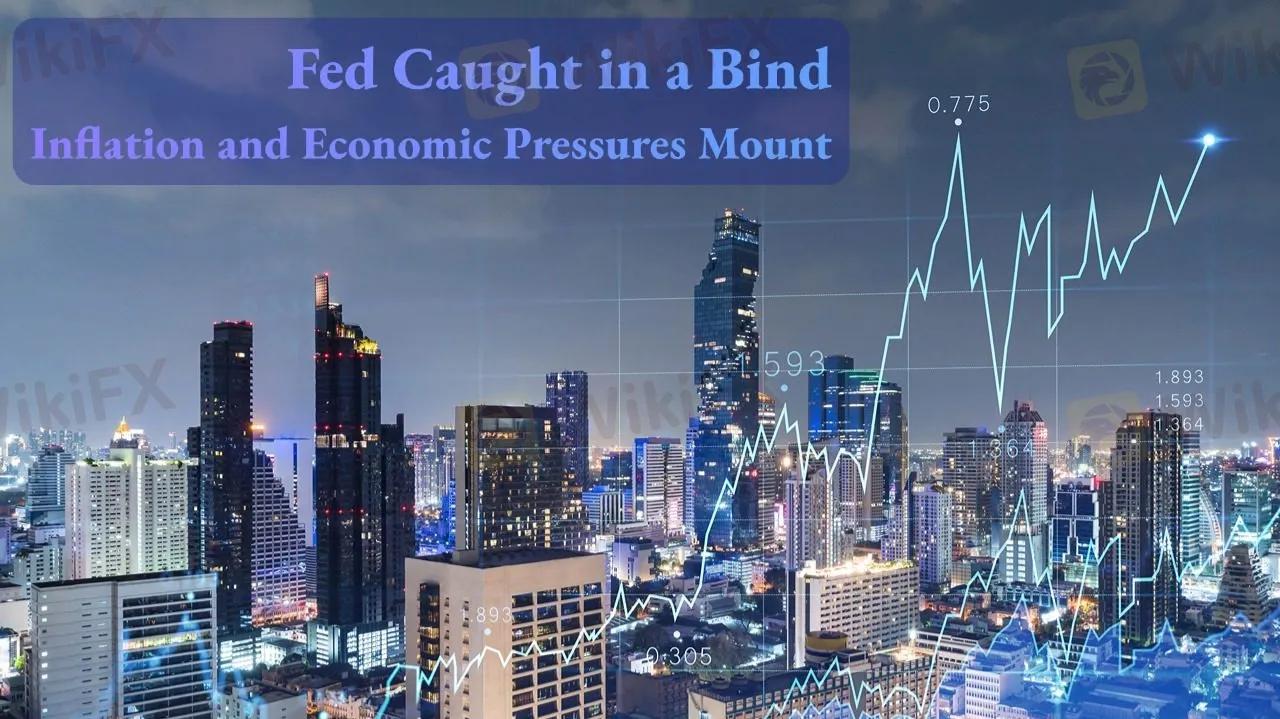简体中文
繁體中文
English
Pусский
日本語
ภาษาไทย
Tiếng Việt
Bahasa Indonesia
Español
हिन्दी
Filippiiniläinen
Français
Deutsch
Português
Türkçe
한국어
العربية
Fed Caught in a Bind: Inflation and Economic Pressures Mount
Abstract:Stubborn inflation and slowing growth leave the Fed stuck between a rock and a hard place, with limited room to maneuver.

The U.S. economy appears to be drifting into stagflation territory—persistent inflation combined with slowing growth. Although official metrics like core PCE show inflation leveling off, market-based and survey-based expectations are creeping up. The University of Michigan's latest survey shows 5-year inflation expectations climbing to the highest level since 2023, a worrying sign for policymakers.
Economic momentum is also losing steam. Consumer spending is showing signs of fatigue, the housing recovery has plateaued, and manufacturing remains in contraction. Businesses are hesitant to invest amid high borrowing costs and persistent wage pressures. Externally, geopolitical frictions—particularly U.S.-China trade tensions—have increased supply chain uncertainties, keeping input prices elevated and inflation sticky.
Fed Chair Jerome Powell acknowledged this twin challenge in his latest remarks, stressing that the central bank is now facing a “two-sided risk.” On one hand, inflation has not come down as quickly as hoped. On the other, growth is clearly slowing, and labor market resilience is beginning to fray. If both inflation and unemployment rise in tandem, the Feds dual mandate—price stability and full employment—will come into direct conflict.
Making matters worse, the U.S. fiscal picture is deteriorating. Though the immediate threat of default has passed, rising debt levels and mounting interest payments limit the government's ability to support growth through stimulus. Powell renewed his warning about unsustainable deficits, urging Congress to take proactive steps to restore fiscal discipline.
In terms of policy, the Fed has adopted a wait-and-see posture. While markets had priced in rate cuts for 2024, Powell continues to signal that rates will remain “higher for longer” until inflation shows clear signs of subsiding. He also dismissed speculation of a “Fed Put,” indicating that the central bank would not intervene in equity markets and would instead stay focused on the real economy.
In sum, the Fed is navigating a highly uncertain environment. Its next moves will hinge heavily on incoming data—especially inflation and labor reports. Should the economy weaken faster than expected, the Fed may be forced to ease earlier than planned, even if inflation remains above target. For now, Powell is walking a tightrope, balancing competing risks with limited room to maneuver.

Disclaimer:
The views in this article only represent the author's personal views, and do not constitute investment advice on this platform. This platform does not guarantee the accuracy, completeness and timeliness of the information in the article, and will not be liable for any loss caused by the use of or reliance on the information in the article.
Read more

Truth About Markets.com: 5 Hidden Risks Revealed
There are many brokers that offer too many promotions. Have you ever wondered why they do this? This Could be the story of Markets.com. Before you choose Markets.com, read about the hidden risks they never openly talk about.

5 Reasons: Microtrade Is a Red Alert
Is MicroTrade a scam or is it safe? This is a common question for many who are looking to invest or trade. Check out this article and you’ll see it is an investment scam

No License, No Security: CNMV Issues List of 10 Illegal Firms
Spain's financial watchdog, the National Securities Market Commission (Comisión Nacional del Mercado de Valores, CNMV), has issued warnings against 10 unlicensed forex brokers operating without proper authorization.

Manual vs. Automated Forex Trading: Which One Should You Choose?
Both manual and automated forex trading have their strengths and weaknesses. Should you trade manually or use automated systems? Today’s article may give you some clues.
WikiFX Broker
Latest News
Global stock markets are calling Trump's bluff on tariffs
Trump's tariffs overshadow the pomp and pageantry as Macron meets King Charles
Boeing delivers most airplanes since late 2023 after ramping up 737 Max output
Inflation expectations drift back down to pre-tariff levels, New York Fed survey shows
MT4 vs MT5: A comprehensive comparison in terms of functionality
Top Forex Trading Strategies for the London Session
Swissquote Takes Full Control of Yuh Digital Finance App in Major Deal
Top 5 Forex Pairs Every Trader Should Have on Their Radar
What WikiFX Found When It Looked Into Decode Global
Treasury yields rise as Trump's new tariff rates in focus
Currency Calculator


